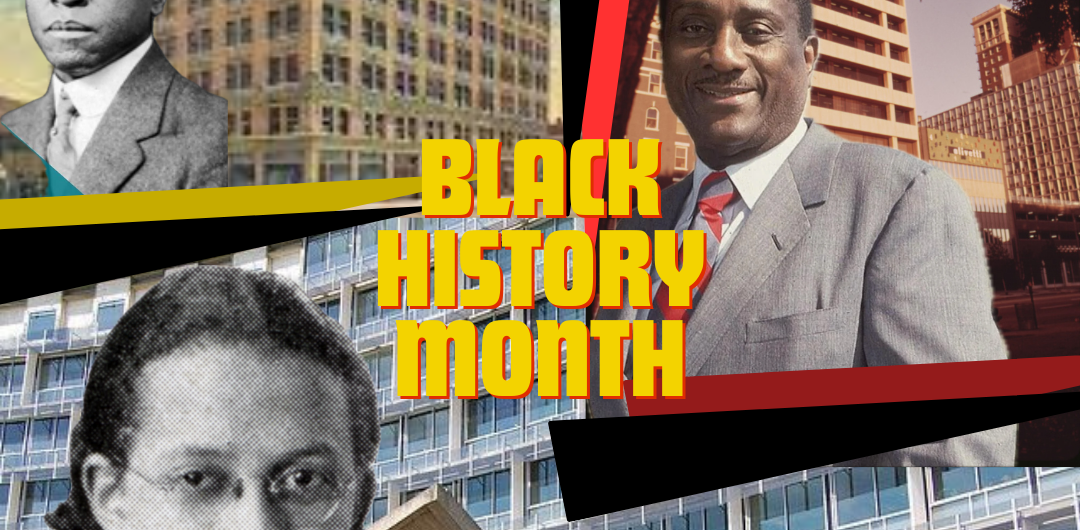
Celebrating Black Excellence in Architecture
As we begin Black History Month, it is crucial to recognize and celebrate the rich tapestry of contributions that African American architects have woven into the architectural landscape. This month represents an opportunity to shed light on the immense talent and resilience of individuals who have significantly shaped the field of architecture. Diversity is the cornerstone of innovation, and the realm of architecture is certainly no exception. In this post, we plan to spotlight four remarkable individuals who have left an indelible mark on the architectural legacy of the city of Chicago – Beverly Lorraine Green, John Warren Moutoussamy, Wendell Jerome Campbell, and Walter T. Bailey.
Beverly Lorraine Greene (1915-1957)
Born and raised in Chicago, Beverly Lorraine Greene’s path to becoming an architectural trailblazer was marked by resilience, passion, and a commitment to breaking down barriers. In the early 1940s, Greene made history as the first African American woman to earn a degree in architectural engineering as well as achieving the monumental milestone of becoming the first Black woman to receive an architectural license in the United States, setting the stage for a career that would reshape the landscape of her city. Her architectural prowess became evident early in her career when she began working for the Chicago Housing Department. In this challenging and dynamic environment, Greene demonstrated an unwavering commitment to addressing urban issues through innovative community-centric design solutions that reimagined public housing. Extending beyond the confines of traditional architecture, Greene’s work of influencing policy and advocating for social justice through the built environment left an enduring impact on the neighborhoods she touched. Greene’s legacy serves as an inspiration to architects everywhere, reminding us that the power of design goes beyond aesthetics- it is a tool for social transformation and empowerment.
John Warren Moutoussamy (1922-1995)
Born with a passion for architecture, John Warren Moutoussamy embarked on his career studying under the renowned modernist architect Mies van der Rohe. This apprenticeship undoubtedly shaped Moutoussamy’s design philosophy, instilling in him a commitment to clean lines, functional simplicity, and modernist principles.
Moutoussamy’s groundbreaking moment came when he became the first Black architect to design a high-rise building in the city of Chicago– the Johnson Publishing Company Headquarters. Finished in 1971, the sleek structure served as the corporate headquarters for the influential Ebony magazine, the very first Black-oriented magazine in the United States to attain national circulation. The building stood as a symbol of Moutoussamy’s architectural aptitude as well as a testament to the breaking down of racial barriers in the profession. Unfortunately, to this day it remains as the only high-rise standing in Chicago that was designed primarily by an African American. Extending beyond individual buildings, Moutoussamy played a pivotal role in fostering inclusivity within the architectural community. By championing diversity and working to create opportunities for underrepresented individuals in the field, he influences the next generation of architects to shape a more diverse and dynamic architectural community.
Wendell Jerome Campbell (1927-2008)
Wendell Jerome Campbell’s architectural career began at the Illinois Institute of Technology, where like Moutoussamy, he studied under master architect Mies van der Rohe. Graduating in 1956, Campbell absorbed many of the modern aesthetics that defined Mies’s iconic style. In 1971, Campbell co-founded the National Organization of Minority Architects (NOMA), an organization that is dedicated to promoting diversity and inclusion within the architectural profession. As the first president of NOMA, Campbell played a crucial role in establishing a platform for minority architects to network, collaborate, and address the unique challenges that they faced in their careers. With designs harmoniously blending modernist principles with a keen understanding of community needs, he has left an enduring impact on the neighborhoods he touched. His pioneering role in establishing NOMA has laid the foundation for an organization that continues to fight for the interests of minority architects, broken down barriers for change, and reinforced the belief that diversity is not only essential but a catalyst for innovation and excellence.
Walter T. Bailey (1882-1941)
Walter T. Bailey’s journey into the realm of architecture began with his enrollment in the University of Illinois School of Architecture, where he achieved the historic milestone of becoming the first African American graduate. One of Bailey’s crowning achievements, a few years before his passing, was his role in the design of the First Church of Deliverance in the Bronzeville neighborhood of Chicago. Completed in 1939, this iconic example of art moderne architecture stands as a testament to Bailey’s architectural vision and his ability to seamlessly blend modern aesthetics with spiritual and cultural significance, cementing it as a landmark in the architectural history of Chicago. Bailey’s dedication to breaking down barriers and promoting diversity in his field paved the way for future generations of minority architects.
This post only begins to scratch the surface of the incredible contributions of these four trailblazing architects. Collectively, these architects have not only shaped the physical landscape of Chicago but have also championed inclusivity, social justice, and excellence in the architectural realm. As we celebrate Black History Month, let their legacies continue to inspire a continued commitment to diversity, innovation, and the pursuit of a more equitable future within the architecture and design community.
